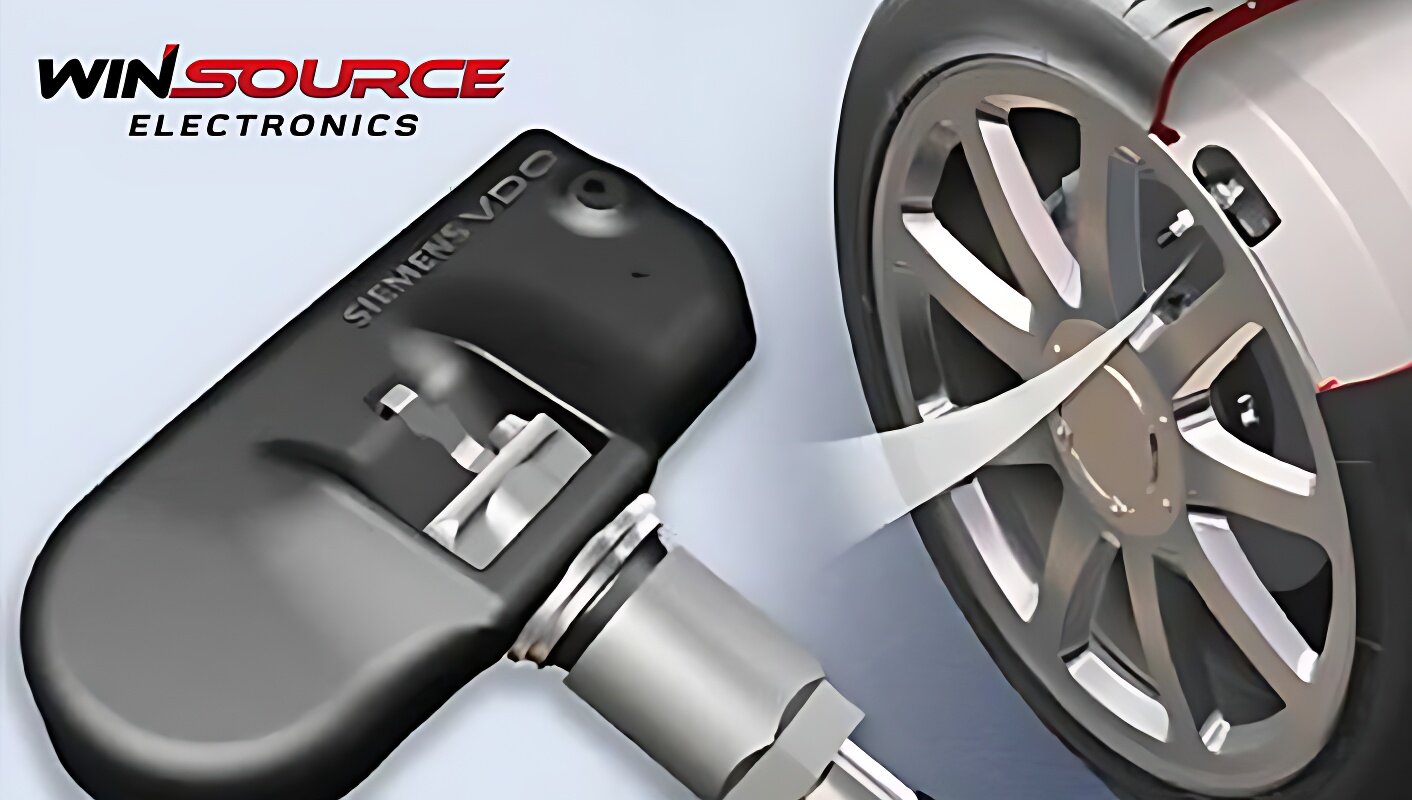
Table of Contents
Toggle1 Definition and working principle of TPMS sensor
Definition of TPMS sensor
A TPMS sensor is an electronic device used to monitor the tire pressure of a vehicle. It can sense the air pressure of the tires in real time and transmit the data to the vehicle system so that the driver can keep abreast of the status of the tires. TPMS sensors can greatly improve driving safety and prevent accidents caused by insufficient or excessive tire pressure.
How TPMS sensors work
TPMS sensors are usually installed inside the tires or on the hub of the vehicle. It senses changes in air pressure inside the tires and transmits this data to the control system on the vehicle. The sensor can send data to the dashboard or central control system of the vehicle through wireless technology (such as RFID, Bluetooth or TPMS dedicated frequency), and the driver can check the tire pressure of each tire at any time.
2 Classification and types of TPMS sensors
Classification based on measurement principles
Direct TPMS sensor: The direct TPMS sensor is installed on the valve of each wheel to directly measure the tire pressure. This sensor can provide more accurate and real-time tire pressure data because it directly contacts the tire pressure and is not affected by external factors. However, the cost of the direct sensor is relatively high, and the installation and maintenance are more complicated.
Indirect TPMS sensor: The indirect TPMS sensor uses the vehicle’s ABS (Antilock Braking System) system or other sensors to infer the tire pressure. It calculates whether the tire pressure is normal by monitoring the wheel speed and other parameters. Indirect sensors are relatively cheap, but are not as accurate as direct sensors and take time to detect changes in tire pressure.
Classification based on transport mode
RFID TPMS sensor: RFID (Radio-Frequency Identification) TPMS sensor uses wireless radio frequency technology to transmit tire pressure data. It can communicate with the RFID reader on the vehicle for real-time data transmission. The sensor typically mounts an RFID tag inside the tire, which transmits data to a reader on the vehicle.
Bluetooth TPMS sensor: The Bluetooth TPMS sensor uses Bluetooth technology to transmit tire pressure data. It can connect with the vehicle’s Bluetooth system to transmit data to the driver’s smartphone or on-board display. This sensor is easy to install and use, and provides a convenient way to view data.
3 Important characteristics of TPMS sensors in the automotive industry
Improve driving safety
The TPMS sensor monitors the tire pressure in real time, reminds the driver of abnormal tire pressure in time, and avoids accidents such as vehicle loss of control and tire blowout caused by insufficient or excessive tire pressure. Maintaining the correct tire pressure can improve the vehicle’s stability, handling and braking performance, and effectively improve driving safety.
Save fuel and reduce emissions
The correct tire pressure can reduce the rolling resistance of the vehicle during driving and reduce fuel consumption. By using the TPMS sensor, the driver can adjust the tire pressure in time to ensure that the vehicle is in the best working condition, thereby saving fuel and reducing emissions.
Extend tire life
Incorrect tire pressure can cause uneven tire wear and shorten the life of the tire. The TPMS sensor can help the driver detect abnormal tire pressure in time, adjust the tire pressure in time, reduce tire wear, prolong the service life of the tire, reduce the frequency of tire replacement, and save maintenance costs.
Improve driving comfort
Maintaining proper tire pressure can improve the suspension and shock absorption effect of the vehicle and improve driving comfort. The TPMS sensor can help the driver monitor the tire pressure at any time to ensure a stable and comfortable driving experience during driving.
Automatic monitoring and early warning
The TPMS sensor realizes the automatic monitoring and early warning of the tire pressure of the vehicle, and does not require the driver to manually check the tire pressure. Once the sensor detects that the tire pressure is abnormal, it will send out a warning signal in time to remind the driver to take corresponding measures to avoid potential danger.
Integration with other vehicle systems
TPMS sensors can be integrated with other systems of the vehicle, such as car navigation systems, intelligent driving assistance systems, etc. Through integration, the tire pressure data of the TPMS sensor can be combined with the vehicle’s real-time navigation and driver assistance systems to provide drivers with more comprehensive vehicle condition information and a smarter driving experience.
In conclusion
TPMS sensor is an important technology in the automotive industry. It monitors the tire pressure of vehicle tires in real time to improve driving safety, save fuel, reduce emissions, prolong tire life, improve driving comfort, and realize automatic monitoring and early warning. Different types of TPMS sensors, such as direct and indirect sensors, and different transmission methods, such as RFID and Bluetooth sensors, can meet the needs of different car manufacturers and models. With the continuous development of automobile intelligence and automation technology, TPMS sensors will be further integrated into the vehicle’s intelligent driving system to provide drivers with a more intelligent, safe and comfortable driving experience. In the future, TPMS technology will continue to innovate and optimize, bringing more convenience and security to the development of the automotive industry and user travel

COMMENTS